

THE VAGABOND SCHOOL OF THE DRAMA



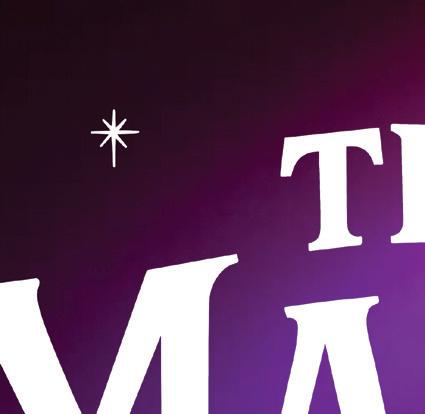



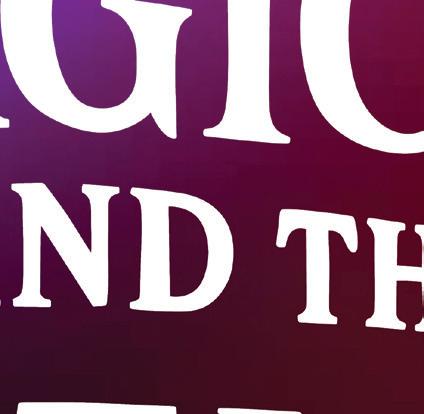



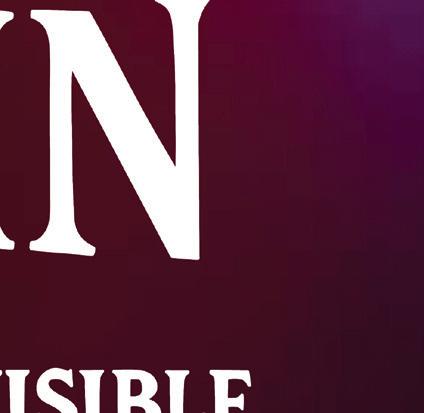

















Welcome to a special look behind the curtain of the Flat Rock Playhouse!
The magic you see on stage — every laugh, tear, and unforgettable moment — is the result of countless hours of behind-the-scenes work designed to disappear once the lights come up. In these pages, you’ll glimpse the artistry beyond the spotlight that takes careful planning, in-depth research, expert craftsmanship, and dedicated professionalism that bring each production to life.
As a producing theater, the Playhouse creates every element of a show in-house using highly skilled professionals. This “producing” model sets us apart from many other theaters of our size and type. Unlike presenting or touring theaters that primarily book finished productions, we start each show from scratch — from casting the performers to hanging the lights. This grants us significant creative freedom and fosters a strong sense of ownership, but it also comes with substantial financial demands.
This “invisible work” — the product of our skilled artists, technicians, and administrators — is expensive and demanding. They are not volunteers or hobbyists; they are seasoned professionals, with years of experience, committed to delivering the theatrical excellence you expect and deserve from the Playhouse. While ticket sales cover a portion of these costs, they simply aren’t enough to fund the extensive creative process, the salaries of our talented professionals, and the materials needed to build worlds on stage.
We do not receive significant government subsidies or large institutional grants that many other theaters depend on. We rely heavily on the generosity of individuals like you to bridge the gap between ticket revenue and the true cost of producing world-class theater onstage.
As friends and insiders of Flat Rock Playhouse, we want you to see firsthand how our dedicated artists and craftspeople pour their hearts, talents, and passions into every detail. While we cannot possibly cover the full breadth of work or individuals it takes to make the magic happen, we have done our best to shine a spotlight and make the invisible, visible. We hope you feel pride in what your loyal support as patrons and donors continues to make possible each season.
Sincerely, Flat Rock Playhouse
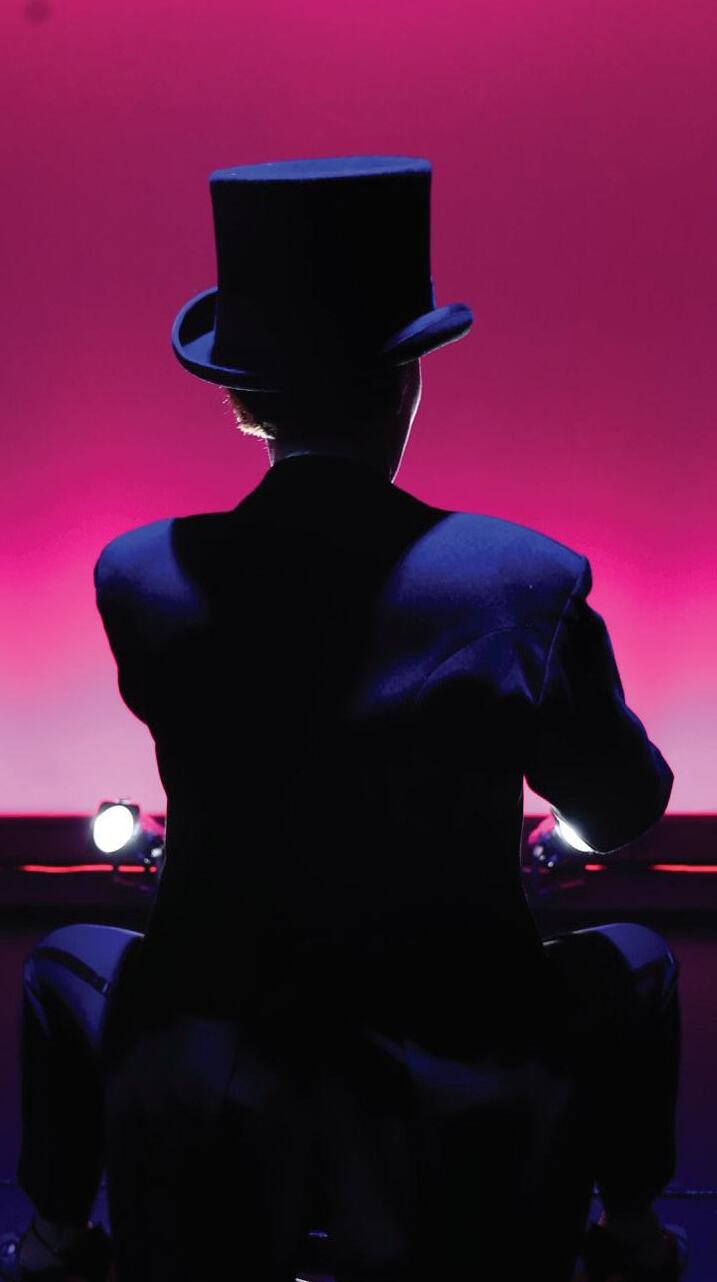
“ Producing theatre is a uniquely complex
art
form—one
of the few that demands the integration of so many others: music, dance, visual art, construction, and more, hining on the artist’s ability to collaborate and communicate with both passion and humility.”
Lisa K. Bryant - Artistic Director
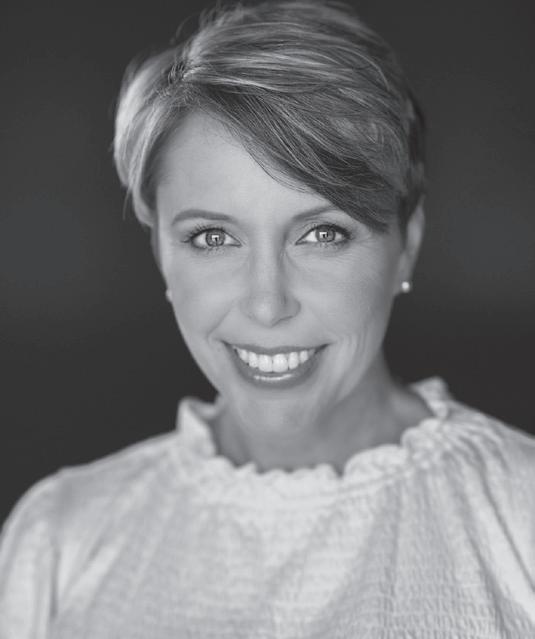
LISA K. BRYANT
Artistic Director
Lisa has been treading the boards for over 30 years as an actor, director, and educator. It has been to the benefit of the Playhouse that much of her development and success as an artist has happened right here on ‘the Rock.’
“ The Playhouse is a producing theatre, which means that we build everything — every season, every set, every costume, every prop — from the ground up.”
Artistic Director, Lisa K. Bryant, starts building each season one year in advance. She goes through 4 to 7 drafts of the season calendar before landing on a final line up. Juggling several factors like show rights, budget, cast and crew availability, technical needs, performer talent, and audience appeal. She compares this process to solving a puzzle that takes several months to complete.
While Lisa begins with artistic goals such as overall vision and audience appeal, practical concerns often
shape the final lineup. She must consider what can realistically be achieved within constraints such as time, budget, housing availability and staffing. Working with the Production Manager and administrative staff to balance these challenges while anticipating others such as marketing appeal, timing of tickets on-sale, and even national holidays all play a factor in how each puzzle piece will fit together.

“As a producing theatre we have to think outside the box and be creative problem solvers, as a result audience members will never see the way we produce shows anyplace else.”
Adam Goodrum and Associate Production Manager, Josh Stewart, play a crucial role in aligning the season for success. Once the season is set, they oversee all technical aspects of each production. This includes everything from hiring the design team, scheduling, calculating show budgets, and overseeing set construction, lighting, sound, props and costumes. Crucial to a season’s success is their ability to identify any challenges each show might present and plan for it.
A typical season at the Playhouse requires a production staff of 30-50 people, not including performers. The production team kicks off detailed planning meetings roughly 25 weeks before a show’s opening night. Then at the 9 week mark the “build of the show” begins, culminating in the final preparations of loading in scenery, props, costumes, lights and sound to get the show up and running.

Production Manager
Adam has been working behind the scenes since 1999. Prior to taking the position of production manager at Flat Rock Playhouse in 2014, he worked as a technical director at several producing theatres around the country.
Ultimately each season, Lisa aims to balance fresh, popular titles with timeless classics. While newer shows help draw in new audiences, she values the rich stories and deeper messages found in musicals like South Pacific or Cabaret; aiming to ensure that each season provides opportunities for patrons and artists alike to explore and grow.
Adam summarizes their core function: “Our role is to facilitate communication between the director, designers and the production team — to keep everyone on track so that we achieve the overall artistic vision developed by the director and designers for the audience to experience and enjoy.”
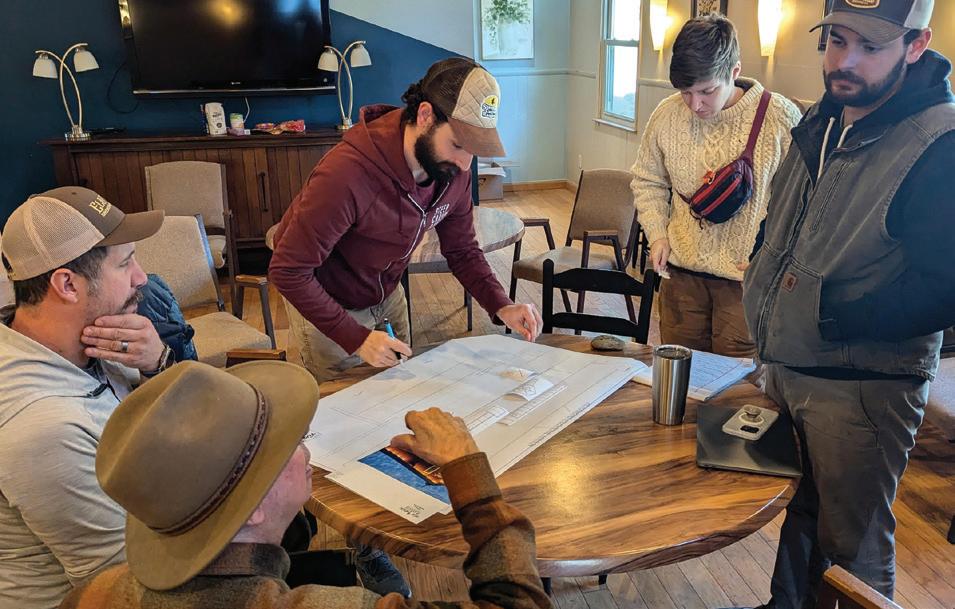

JOSH STEWART
Assiociate Production Manager
Josh
and
as a
Dennis C. Maulden explains, “Our responsibility to the audience is that a show isn’t just words. Scenic design creates a world that is visual, poetic, and makes sense to the audience. We want the audience to be comfortable in a known space but with a sense of something new and unknown.” This bold philosophy underpins the entire process of bringing a production’s visual world to life.
This process is meticulous, involving:
· Reading the script to determine time period, setting, action, and themes.
· Working with the director and design team to develop an artistic vision and plan out each scene.
· Researching to collect reference images such as architectural styles, artwork, textures, colors, and cultural elements to develop a visual language for the show.
· Creating sketches, building models and architectural draftings to communicate the logistics of the set.
· Working with the director and technical staff throughout the build to ensure final vision is brought to life within budget and schedule.
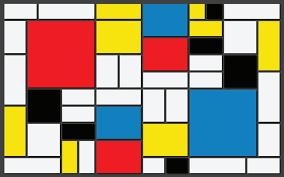
“ You can’t write a designer’s note on the set, but you hope the visual language makes the audience feel something.”
Dennis’ goal — for the audience is to have a deep emotional connection to a show’s themes, what he describes as a “zeitgeist moment,” informs every detail of the final set design. Yet, scenic design is also an evolving process, not a static blueprint. It adapts as the world of the show is built and rehearsed - blending creativity, technical knowledge, and above all collaboration.
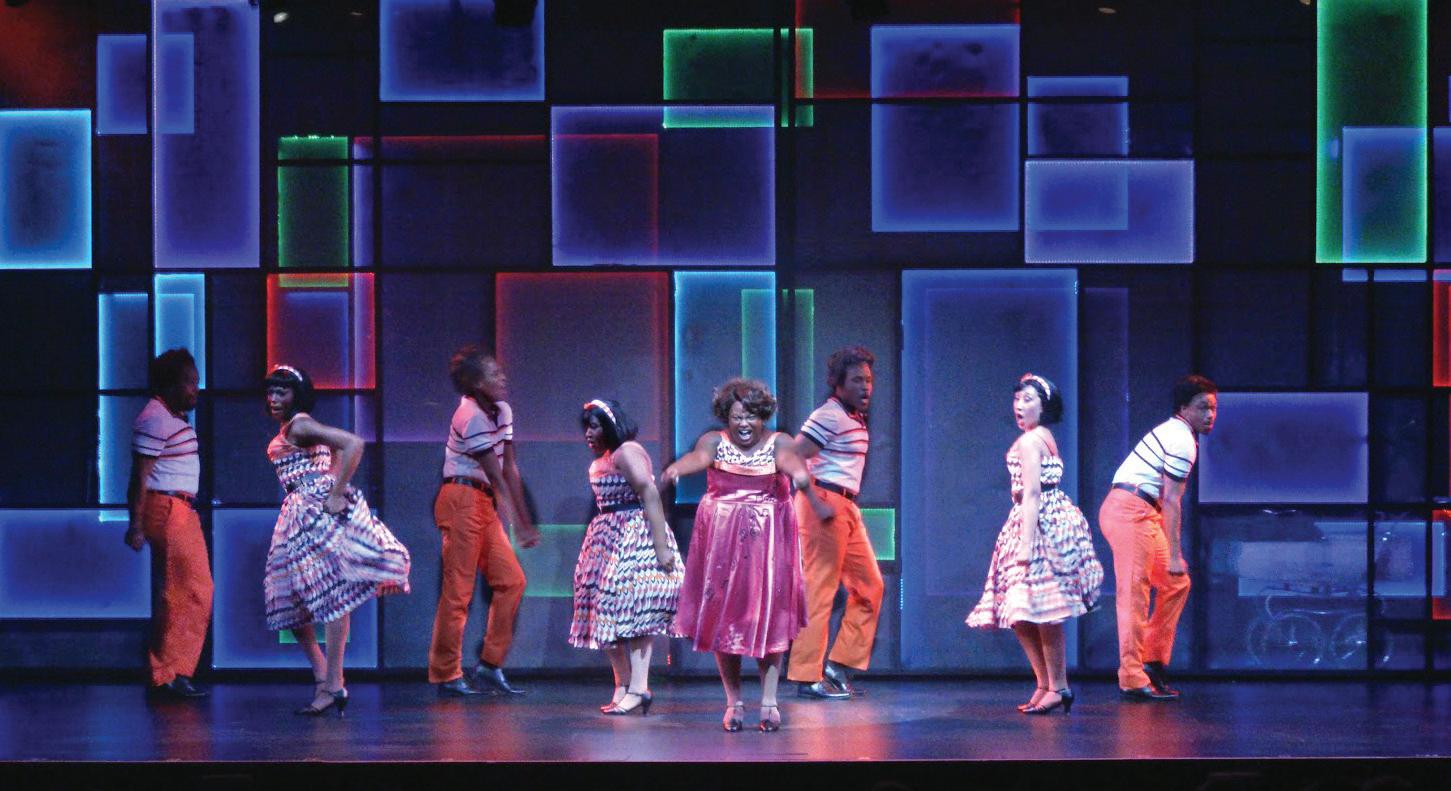

DENNIS C. MAULDEN
Scenic Designer
Dennis unwittingly began his design career in high school and has been working professionally as a scene designer for more than fifty years. His love of literature, music, art, and story-telling proved a perfect fit for his lifelong theatre journey.
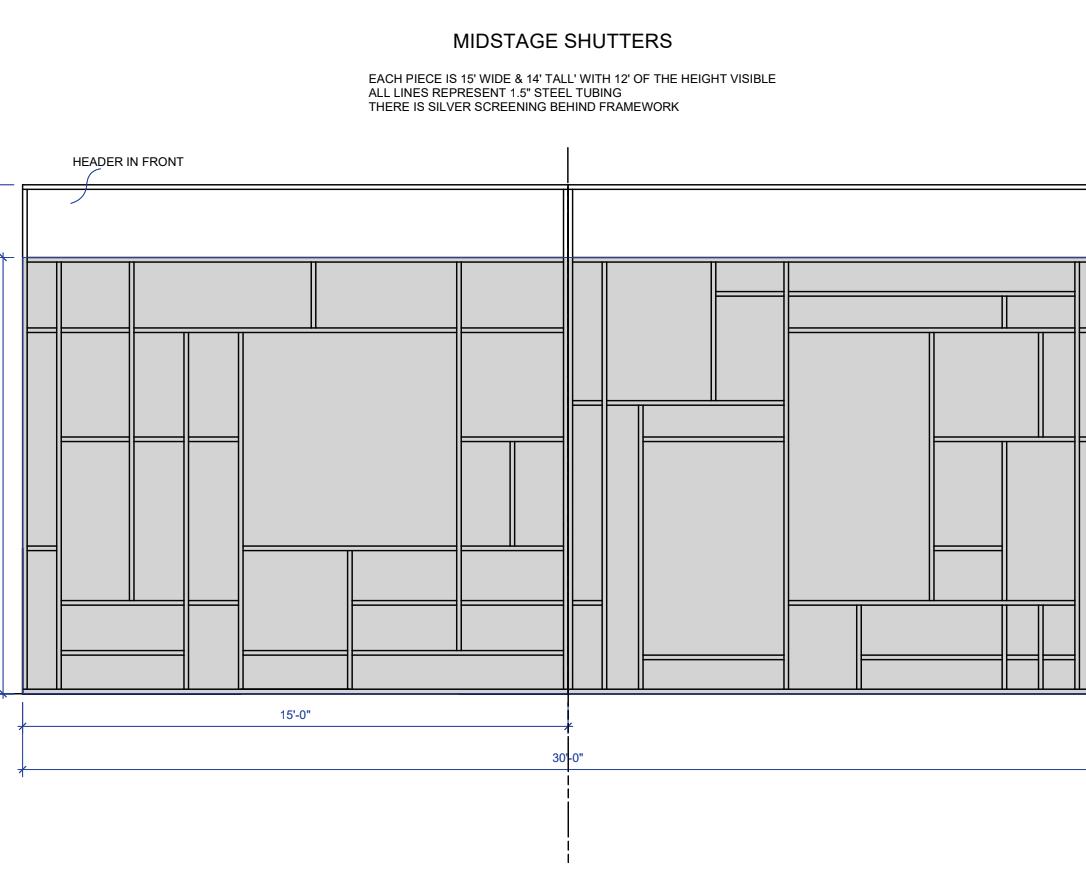

For Beautiful, Dennis drew inspiration from the geometric artistry of Dutch painter Piet Mondrian. This design leans into poetic abstraction rather than strict historical realism; helping to set a tone and mood for the production from the first beat of the overture.
The Scenic Construction department’s efforts are truly the backbone of any theatre production transforming a director’s and designer’s artistic vision into a physical reality on which the performers bring the show to life. The department consist of 4-5 staff who ultimately create and manage the onstage and behind-the-scenes technical elements, ensuring a seamless and immersive experience for the audience.
All set elements at Flat Rock Playhouse are built right here on “the Rock.” Each show is a remarkable feat of design, coordination, and sheer effort. Once the designs are received, the Technical Director reviews them, focusing on 3 critical factors:
1. Time: How long will it take to safely and correctly construct the sets?
2. Quality: Does the department possess the necessary expertise and resources to execute the design?
3. Cost: What are the material and labor expenses involved?

THOMAS WILSON Technical Director
Thomas has been working in the theatre industry for 10 years now in various positions, from a member of IASTE local #10 to Management of Broadway National Tours.
All 3 elements are carefully weighed against the final design, often leading to adjustments and/or creative solutions. Continuous and critical communication between the director, scenic designer and the staff is paramount to successfully bringing the set to life.
The diverse demands of different productions highlight the department’s incredible range of skills and problem-solving abilities. For instance, the musical Beautiful featured static scenery, yet it required 180 hours just to weld the intricate steel framework. In contrast, The Play That Goes Wrong demanded over 170 “set gags” within a run time of under 120 minutes — eliciting a completely different set of challenges.
Each new production showcases the team’s adaptability, ingenuity, and skill. Their tireless work ensures that the physical world of the play functions flawlessly for every performance, allowing the audience to be fully transported into the story.
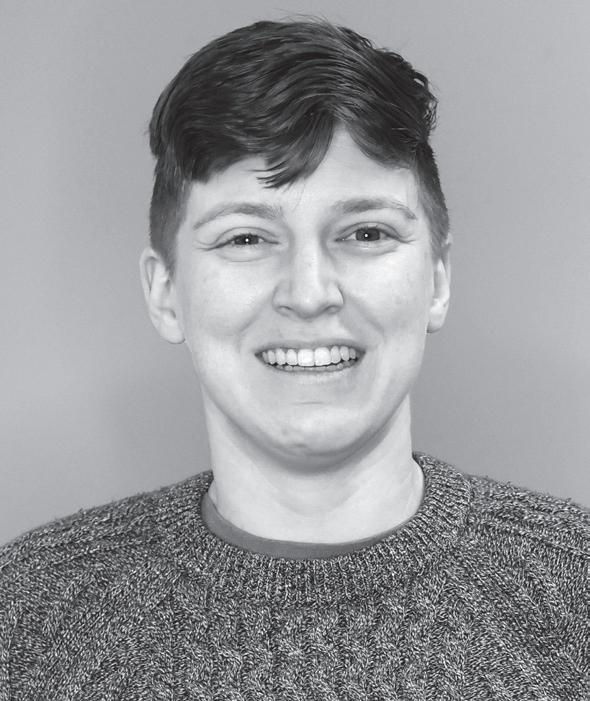
Emily has been working backstage since 2004 when she was a camper at Camp Merrie-Woode. She has been a theater professional on-and-off since 2011.
“ Time, quality, and cost guide everything we do.”

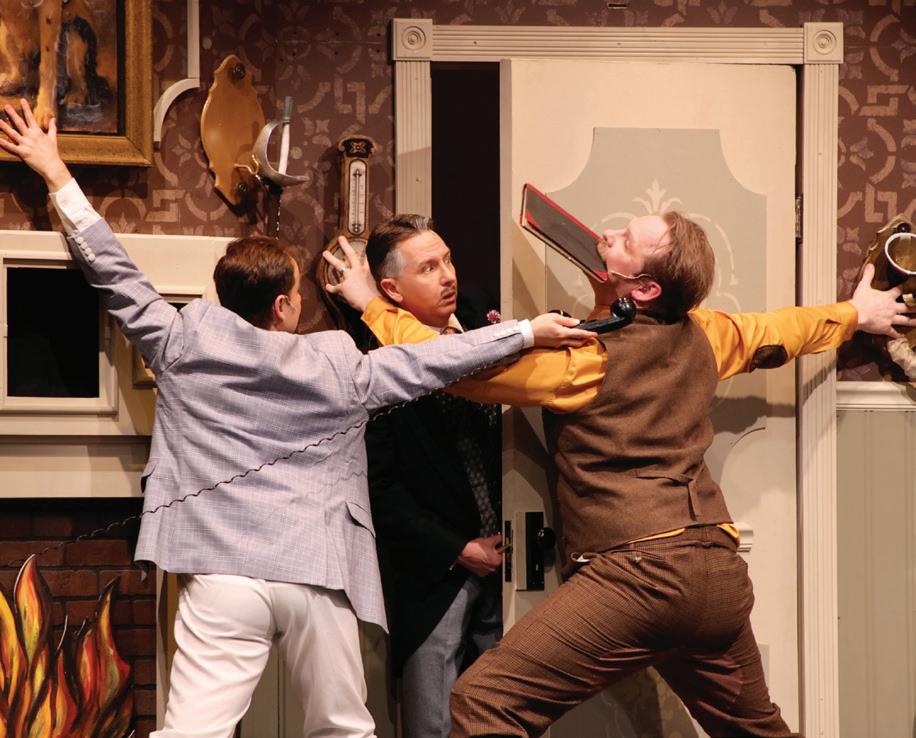
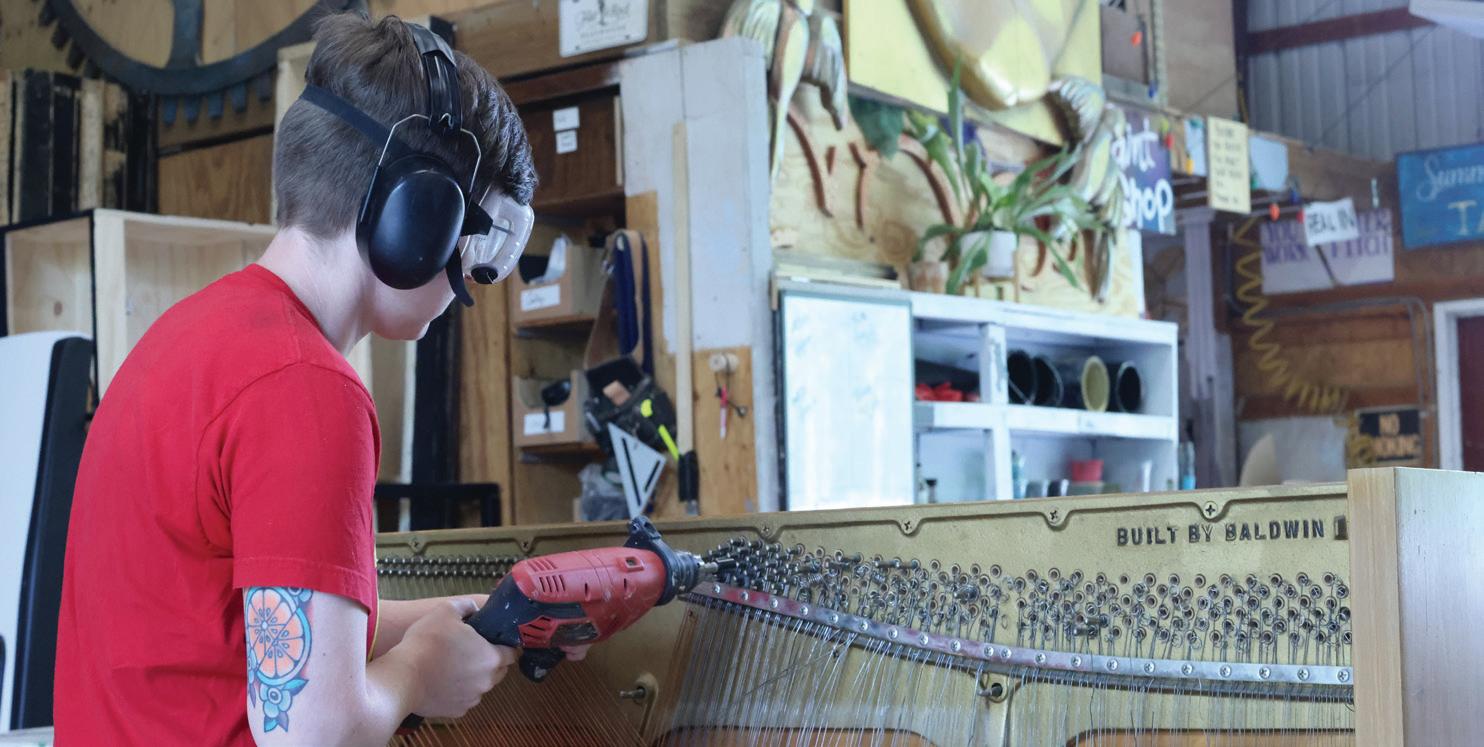
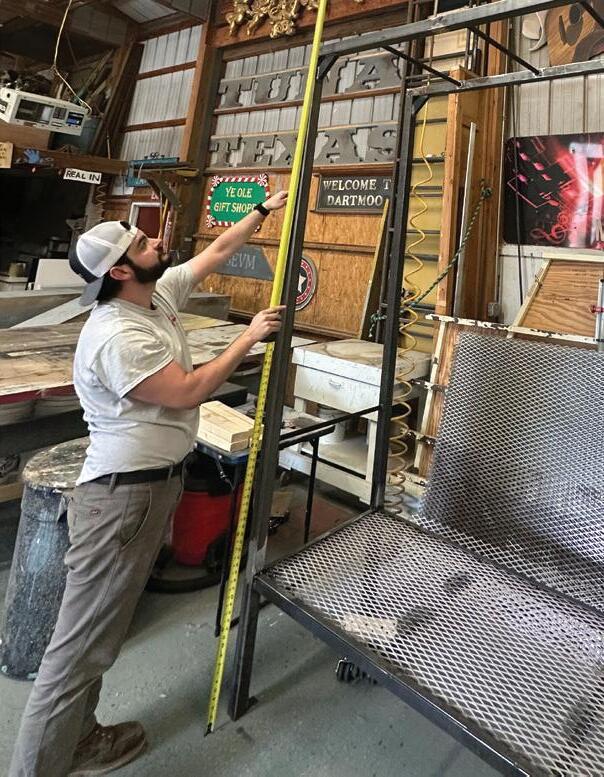
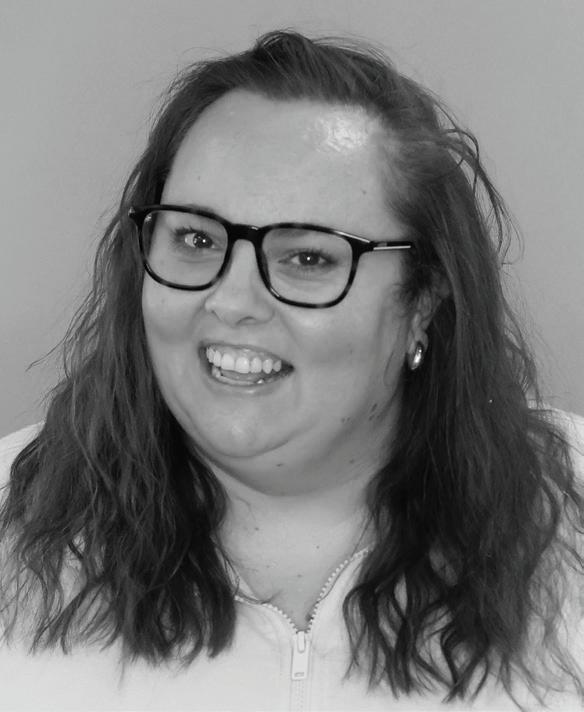
KENZIE CONNOR
Props Manager

“ If it’s not an actor and it’s not the set, it’s a prop.”
Kenzie has been working in professional theatre since making her stage debut in southwest Virginia at age 4. She began her professional technical theatre career as an intern at Flat Rock Playhouse back in 2010.
While the set establishes physical space for performers, props are essential in filling that space with context and authenticity. Providing the details that tell a story and grounding the production in a specific time and place. The process of creating this context begins months before rehearsals even start.
Kenzie Conner begins by reading each script at least 3 times. The first read is to grasp the overall story. The second is for brainstorming. The third and final is dedicated to compiling a comprehensive list that serves as the foundation for the department of 3 for the 6 weeks of build and crafting that follows. Hours are spent researching the art, technology, attire, furniture, and other cultural elements of the show’s time period and setting.


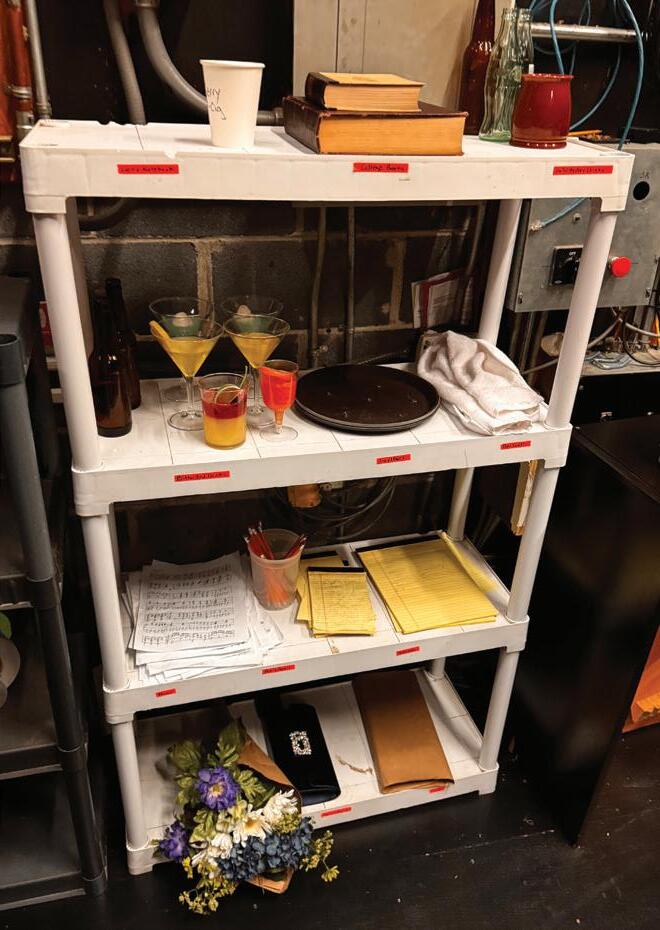
After the prep and construction, the props department must ensure props or stand-ins are ready for rehearsals so that each scene can be staged. Finally, once the curtain rises, in-between every performance each prop is checked, repaired or replaced as needed, and reset backstage, ensuring that each performance is the same as opening night.
Regular dialogue with the director and scenic designer is crucial. A director’s vision may call for props not in a script but necessary to achieve the overall artistic vision. For example, in Cabaret, mannequins were not identified in the script, but the director wanted something to foreshadow the atrocities of the Holocaust. Collaboration with performers is also crucial. Kenzie often adds personal touches that enhance realism for the actors. While not visible to the audience, they contribute to realistic interactions between actors, in turn, making the performance believable. This collaborative approach ensures that every prop helps to create a cohesive and realistic world, that seamlessly integrates with the overall vision.


“ Costumes should give the audience information about characters before they speak.”
TIM BARHAM Costume Shop Manager
Tim has been a professional costumer for more than 36 years, working coast to coast with local, regional theatre and theme park costume shops. In the 4th grade he started working on productions with his local high school theatre.
The script serves as a creative roadmap, enabling costume designers to transform the playwright’s descriptions into visual language. Through the deliberate choice of color and texture, costumes immediately offer insights into a character’s personality and their connections to others, often subtly suggested by similar styles or colors.
Each theatrical production brings its own set of unique costuming challenges. For instance, the musical Beautiful demanded a staggering 200 complete looks, involving over 800 individual clothing items and 105 pairs of shoes. Costumes are either pulled from existing stock, custom-built to match the director’s and designer’s specific vision and requirements, or purchased when necessary. These decisions depend on factors such as availability, the historical period of the play, and the budget. Tim stresses that “every costume, for every show, has to work hard — visually, historically and functionally.”
Building and maintaining costumes at Flat Rock Playhouse requires a team of stitchers, wardrobe managers, wig designers and make-up artists all working to ensure that each costume is fitted, tailored, and maintained throughout the run of the show. Costumes must be cleaned between performances, repaired as damaged, and placed in dressing rooms ready to hold up to the scrutiny of stage lights.
The creation of each costume is a deeply collaborative and intimate process involving the performer, the director, and the costume designer. Open communication is essential to harmonize the director’s artistic vision, the designer’s skills, and the actor’s comfort. As Tim concludes, “We’re asking actors to be vulnerable and to trust us to make them look and feel like their characters — to help them bring the world of the show to life.”






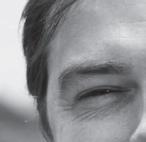
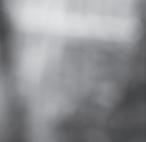
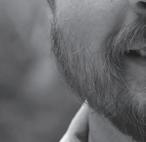


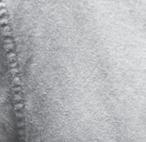

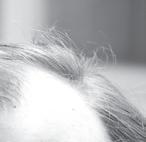

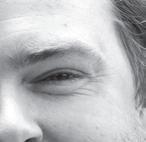


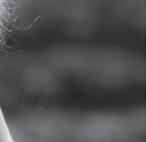
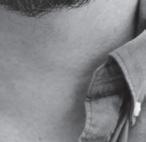
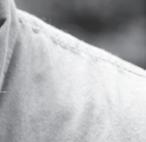
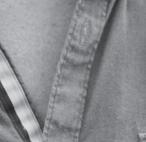

MONTANA KERN
Head of Lighting and Projections
Montana is the newest addition to our team, joining us this summer! He says “I did my first Arena stage load in as soon as I could legally work. 2025 marks 19 years with work that I love.“
Theatrical lighting can be described as selective visibility. It’s a powerful blend of art and technology that shapes the audience’s experience and helps tell the story. A lighting designer controls what the audience sees, when they see it, and how - focusing attention on the most important moments on stage. Through color, quality, and brightness, lighting adds meaning to a scene and shapes the audience’s emotional response.
For each production, 3 to 4 technicians hang lights in specific locations based on the designer’s plan, which is developed in collaboration with the director. This process, known as “hang,” usually takes 1 to 2 days, with technicians working on ladders to position each light — or “fixture” — on the overhead grid. When colored lighting is needed, hundreds of gel films are hand-cut and placed on the fixtures to create the vivid tones and moods that define each scene.
Lighting fixtures placed directly on stage, known as “practicals,” are often used to support the story. For Beautiful a custom light wall was created to transport the audience to The Drifters’ performance at the Apollo.
After the lights are physically set up, the final effects are programmed using a lighting console — an advanced digital system that allows designers to create sequences called “cues.”
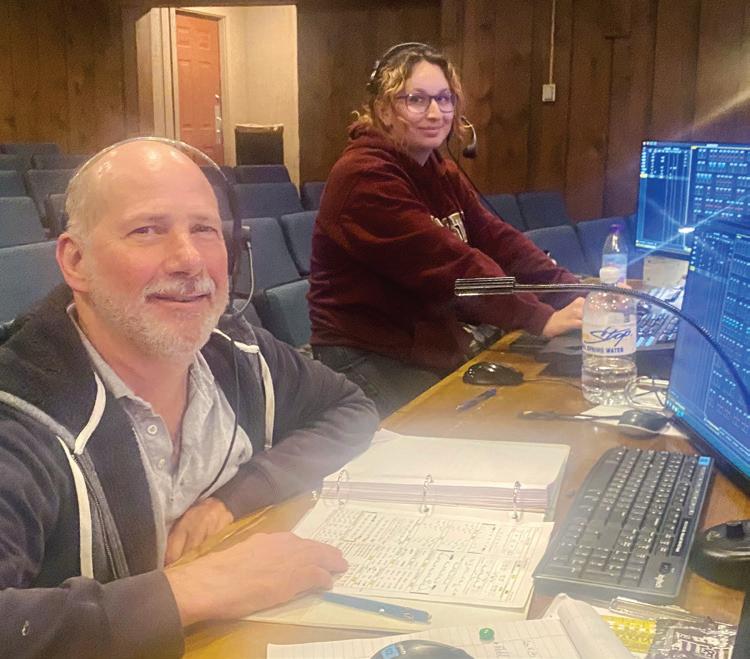
Each cue sets the intensity, color, beam shape, and movement for every fixture.
The Playhouse has thousands of these fixtures, all of which must be carefully programmed to work together, creating the perfect visual atmosphere for each moment.
From the first cue to the final blackout, lighting brings the stage to life—guiding the audience through time, space, and emotion.
“ Lighting becomes the glue that holds it all together.”

Todd Wrenn, Lighting Designer- BEAUTIFUL: THE CAROLE KING MUSICAL

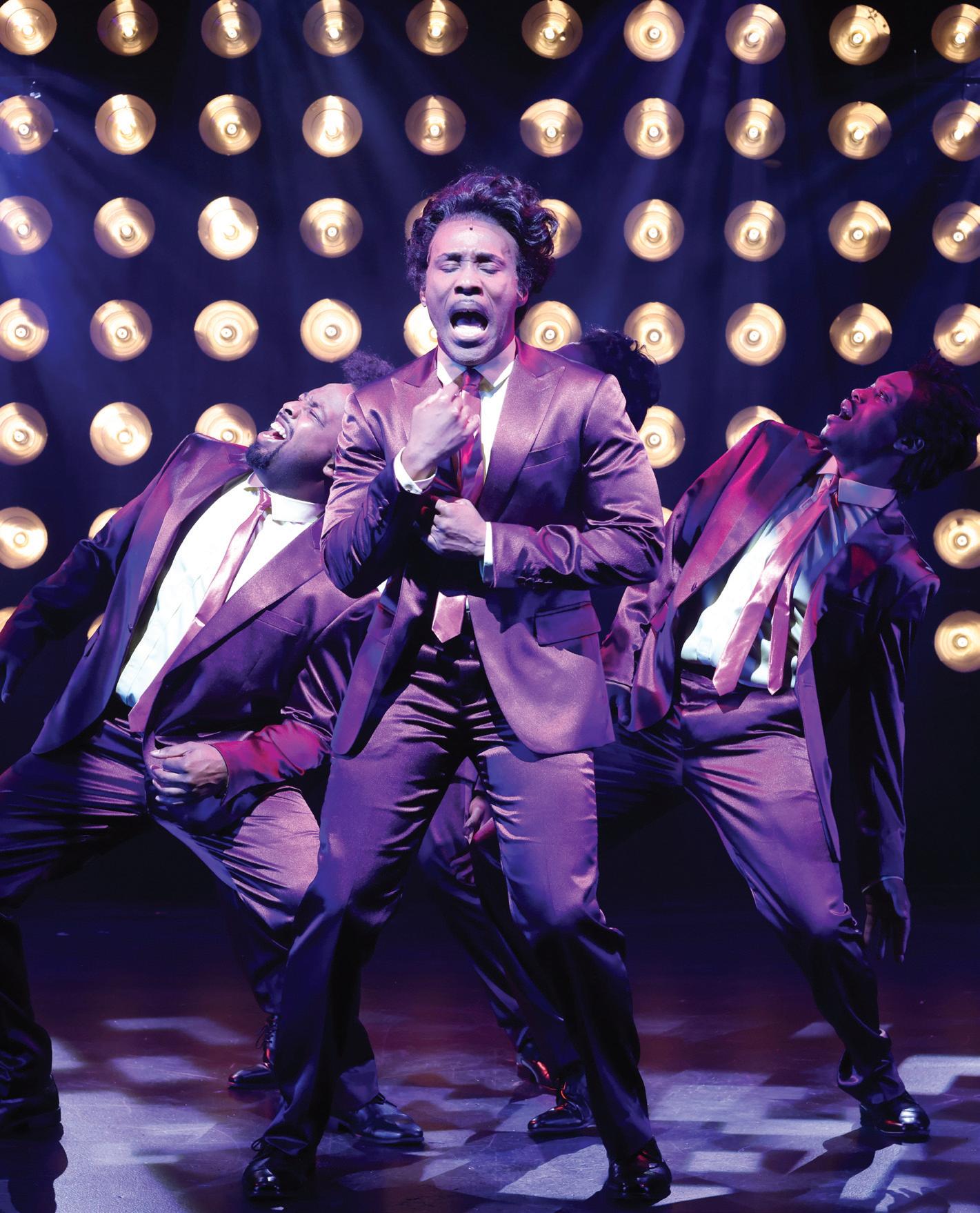

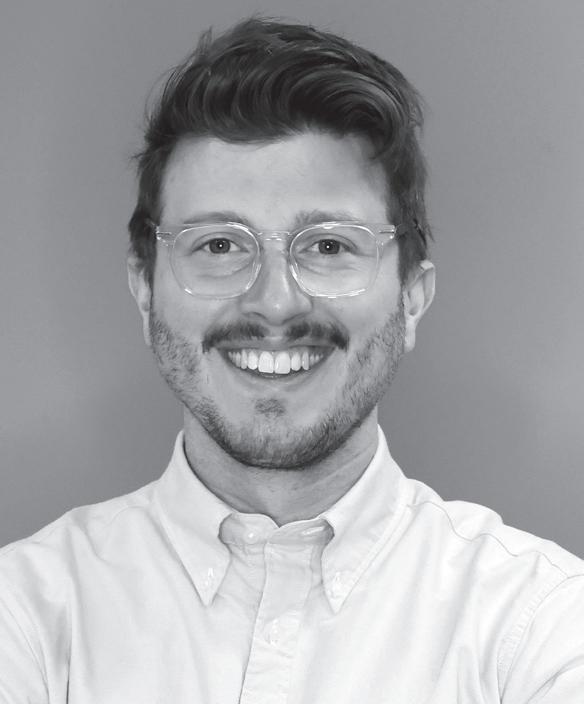
Artistic Associate and Music Supervisor
Ethan has worked in the professional theatre industry for the past 15 years, on Broadway shows, national tours, top universities for theatre training, and regional theaters.

Musicals are extremely popular, but because there’s no visible orchestra pit, many audience members assume the Playhouse uses pre-recorded music. In reality, we proudly use live music for all our productions. When our orchestra isn’t on stage, our talented local musicians are located in the orchestra loft, behind and above the Leiman Mainstage.
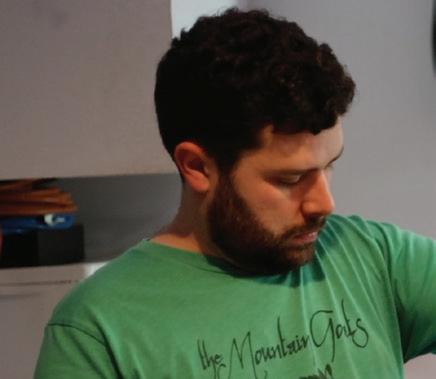
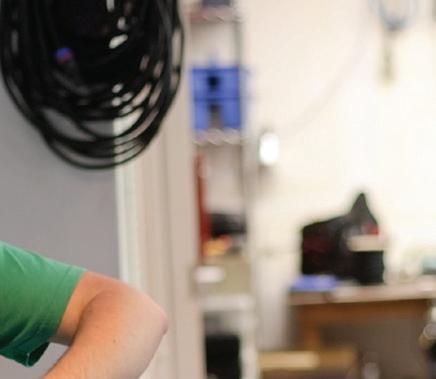
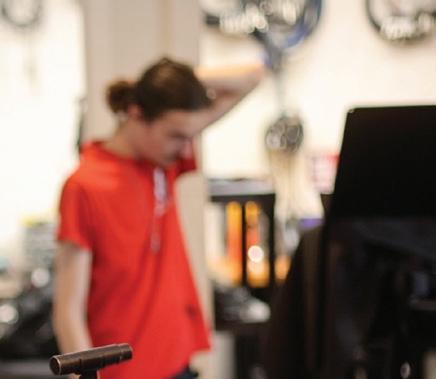
“There really is nothing like the energy live music generates in the theatre. It’s a conversation back and forth between the actors, the musicians, and the audience.”
Ethan believes in the power and energy that live music brings. Each musical receives its own unique orchestration. Due to space limitations and budgeting, our orchestras are often smaller than those on Broadway, but it’s Ethan’s task to make sure each show still sounds full and exciting. Re-orchestrating iconic music like Mamma Mia!, Cats or Beautiful is no
small task. “I rework each score for our musicians, so they can deliver the sound our audiences expect and love.”
To prepare for each production, the orchestra rehearses for 2 weeks, working intensively to lock in tempo, transitions, and ensemble cohesion. The result is a thrilling experience for the audience, complete with tight harmonies, bold brass lines, and a rich, full sound that flows through strategically placed speakers, surrounding the audience and enhancing every moment onstage.
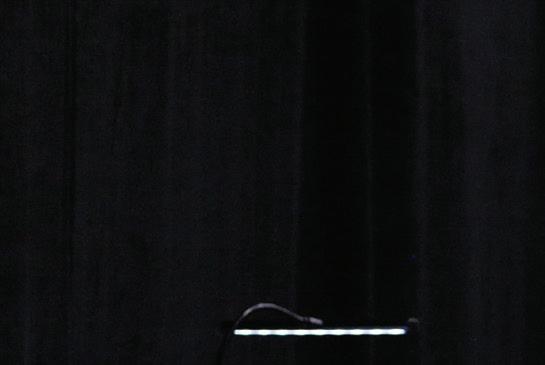
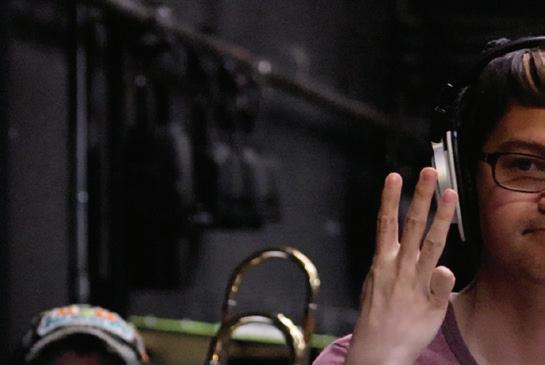

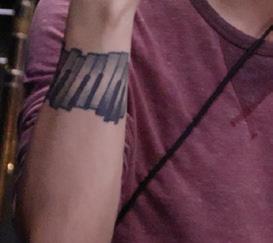



The sound design process begins with a deep dive into the script, requiring multiple readings to uncover its emotional and narrative rhythms. Kurt Davis then explores recordings from past productions or relevant source material to identify what elements will enhance storytelling and evoke the intended emotions. With a strong foundation in theatrical design and years of hands-on experience, Kurt approaches each production with a blend of technical expertise and artistic intuition, ensuring the sound elevates the entire performance.
Kurt’s design philosophy centers on creating an immersive soundscape that feels both intimate and expansive. Every element from the strategic placement of speakers to the precise timing of sound cues — is carefully orchestrated to deepen the audience’s emotional
engagement. Before the show even begins, ambient sound and music subtly guide the audience into the world of the play, setting the tone and establishing the time period. Throughout the performance, sound is used to amplify emotion, shift perspective, and seamlessly connect scenes. These transitions are made possible through advanced digital consoles and meticulously programmed cues, allowing for real-time adjustments and pinpoint control over any given moment. The result is a rich auditory experience that complements the storytelling, heightening every moment onstage.
“Sound design consists of everything the audience hears— from actors’ voices and music to intricate sound effects.”
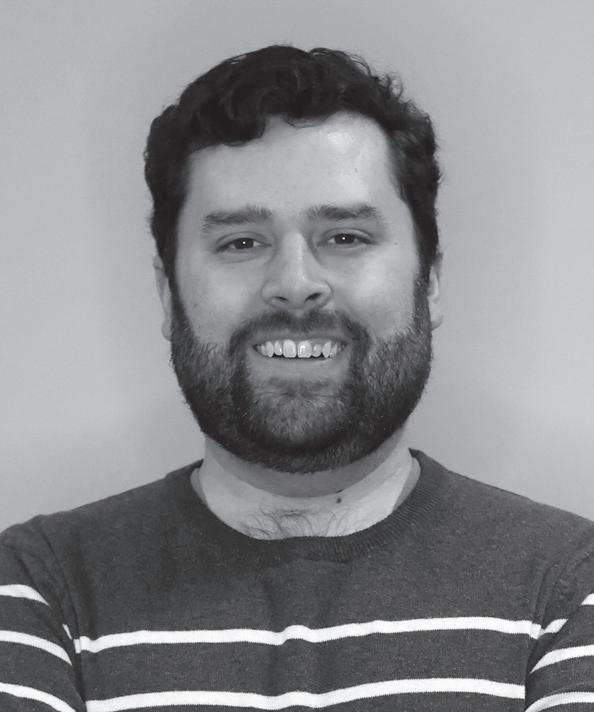
KURT DAVIS Head of Audio

BILL MUÑOZ Stage Manager
Bill’s professional career began 37 years ago. He belongs to 3 unions (SAG/AFTRA, IATSE, AEA) working as an actor, stage hand, production manager, stage manager, and fight choreographer.
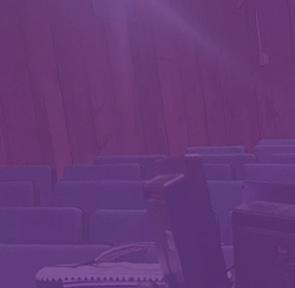
“It’s like being the captain of a ship…The designers and directors hand it over to me after opening, and then it’s my job to maintain the integrity of their vision. ”


When attending a performance at the Playhouse, patrons might notice three booths located to the left of the entrance. One controls sound, the last manages lighting, and the center booth belongs to Production Stage Manager, Bill Muñoz. From this hub, Bill with a
team of ASMs, orchestrates the many technical elements of a live show, turning the invisible mechanics of theatre into a seamless audience experience.
While audiences are swept away by story and song, he remains unseen — yet his presence is felt in every cue, scene change, and perfectly timed transition. His role comes into sharp focus during Tech Week, when all production elements — lighting, sound, sets, props, and costumes — are integrated for the first time. “I make sure everything flows,” he says. “That includes calling cues for lights, sound effects, and scenic shifts — anything the audience sees or hears.”
The musical Beautiful was no small feat, with more than 400 cues per show. Billy juggled spotlights, transitions, and sound effects in perfect sync with the live performance. “This one was as busy as West Side Story,” he notes. “There were a lot of moving parts, and I had to stay completely locked in.” His behind-the-scenes precision ensures each moment on stage lands exactly as intended. From first cue to final bow, his invisible guidance keeps the production sharp, ensuring every performance matches the first in energy and execution — a quiet force behind the show’s success.



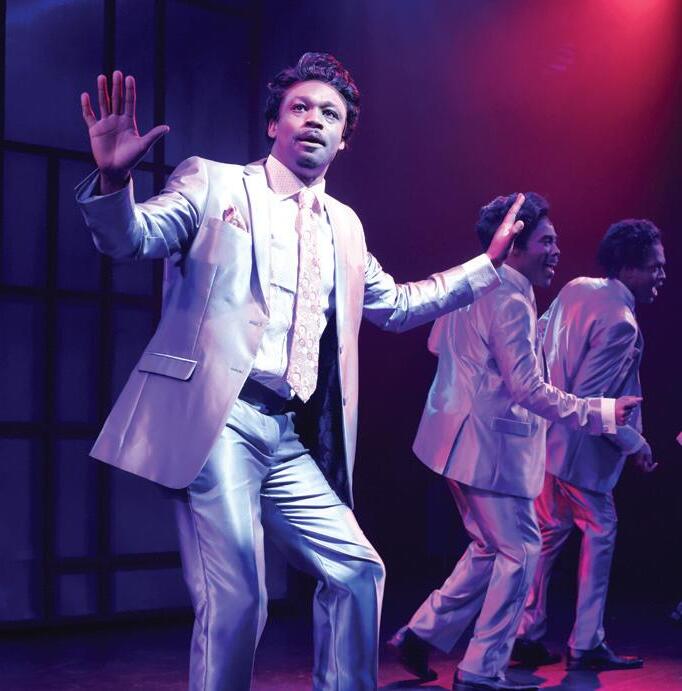
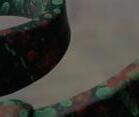


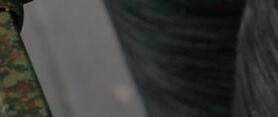

We’ve created this booklet to shed light on the often-unseen world behind the curtain-to make the invisible, visible. Our goal is to help you appreciate the remarkable artistry, passion, and precision that brings live theatre to our stage. You’ve now discovered how each season is carefully curated and how countless hours go into designing, building, costuming, and crafting every element that turns an idea on paper into a vivid, living performance on stage.
Yet, there’s one other crucial area that often remains unseen: the significant gap between the revenue generated by a show and the actual costs of producing it.
To close this gap we would need to significantly raise ticket prices. Drastically increasing prices would put our productions out of reach for many families, students and individuals who cherish the Playhouse, restricting who can experience the joy, reflection, and inspiration that only live performance can provide.
Your charitable contribution can bridge this gap, helping us make the invisible, visible for all – ensuring that the immense talent, professional craftsmanship, and state-of-the-art technology behind every production can continue to flourish.
With your gift, you are directly supporting:
• World-Class Craftsmanship: Enabling our production departments to continue building every element from the ground up.
• Artistic Excellence: Attracting and retaining the nation’s best actors, musicians, and designers, ensuring the highest caliber of performances and productions.
• Community Enrichment: Providing performing arts experiences and educational programs across the regions we serve.
Thank you for being a vital part of our Playhouse family and helping us continue to tell powerful stories,


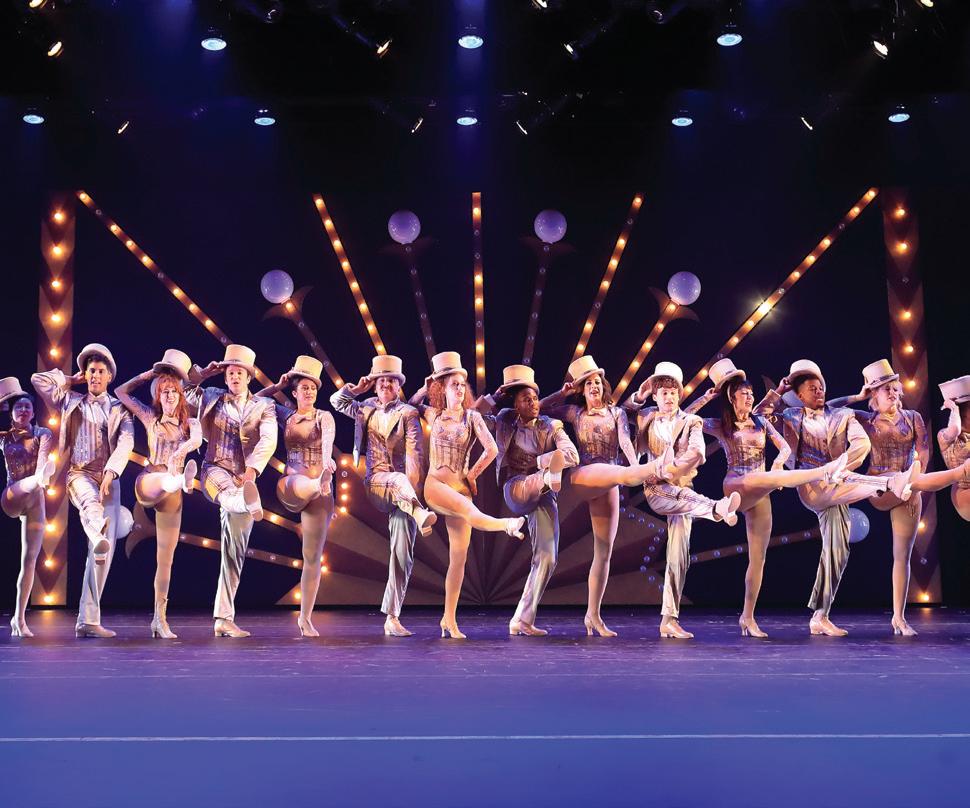
Flat Rock Playhouse
• Mail a Check: Use the enclosed envelope to send your donation.
• Donate Online: Scan the QR code to make a secure online donation.
• IRA Donations: If you’d like to make a donation from your IRA, The Vagabond School of The Drama, Inc. is a qualified charitable organization. Our Tax ID is 56-0571518.
THANK YOU FOR YOUR SUPPORT
We are grateful for your belief in our mission.
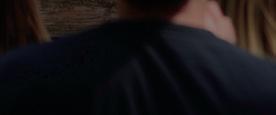

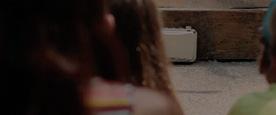
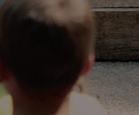




SCAN TO DONATE
P.S. Want to learn more about the unsung heroes behind the curtain?
To schedule a tour or for more information on how to give, Contact Sam Goodrum: Sam@flatrockplayhouse.org or call 828.693.0403 x 234
